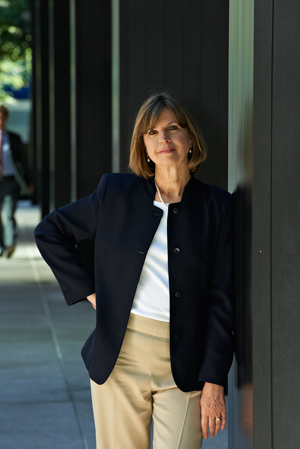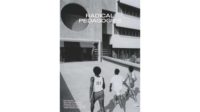How the 2012 Olympics became the “alibi” for reclaiming a derelict swath of the city.
After the gold medals are carried home and the frenzy of each Summer Olympics dies down, what becomes of the much-televised architecture and urban designs created for the Games? Beijing’s Bird’s Nest from 2008—that spectacular blend of artistry and engineering by Herzog & de Meuron and Ai Weiwei—is mostly visited by tourists these days, who grab a shot of themselves in front of it, but its vast interior is only intermittently filled with shopping stalls or the occasional athletic event or concert. In Sydney, the potential to rehab the grittier areas of its port, on the city’s stunning harbor, was passed over in favor of building a shiny outpost for the 2000 Olympics on the dusty inland site of an abandoned abattoir, far from downtown or easy transit—an area that a dozen years later is still not thriving, as its promoters claimed it would be.

This summer, it’s time for the Olympics once again, and the host city of London is trying to do it right. Our preview in this issue of record offers a lesson in ambitious planning to create a long-term legacy of the Games. London won the bid for the Olympics in 2005, but the idea to target a derelict postindustrial part of East London for regeneration, now home to the Olympic Park, goes back at least to the 1990s and the planning strategies of architect Richard Rogers. Rogers, chief advisor for architecture and urbanism to London’s then mayor Ken Livingstone (just imagine if most U.S. mayors created such a post!), advocated increased density by reclaiming urban brownfields and maintaining a greenbelt around the city. The Olympics became “the alibi,” in the words of Deyan Sudjic, head of London’s Design Museum, to remediate toxic sites and waterways, create a 500-acre park, and build facilities for a community that will eventually comprise thousands of households. Sustainability has been a driving force here: The Games are touted as the greenest and could also be called the first pop-up Olympics. Most London 2012 sports venues are temporary structures or can be reduced in size post-Games. Athletes will be housed in new high-rises around grassy courtyards—designed by up-and-coming British architects—which will later be converted into apartments, some of them affordable. Americans are playing a big role in this future English neighborhood: The London Legacy Development Corporation is headed by a former deputy mayor of Philadelphia, Andrew Altman, while two U.S. firms—Hargreaves Associates and James Corner Field Operations—are creating large landscape and urban design schemes.
Infrastructure is key to the success of the Olympics and East London’s future, and huge investments have been made in the public realm. Olympic Park is served by several subway and rail lines (the trip from the center of London by Tube is under 10 minutes), and the community will eventually be a stop on the Eurostar train to the Continent. Elsewhere in London, the summer of 2012 became the deadline for an array of public projects despite the ongoing economic downturn. Railway stations, roadways, bridges, subway stops, and public plazas have been rehabbed. And with cranes visible all over the city, private development is clearly ongoing—at least for now—thanks in part to the influx of foreign capital: Qatari money is behind both the Olympic apartments and the Shard, the new skyscraper by Renzo Piano, now the highest building in London.
London 2012 was originally sold to the British public as the “austerity Olympics,” but the costs have soared, at a time when the government is slashing holes in the social safety net. Will the expense, in the long run, be justified? That’s the idea. The ambitious plan for the site is meant to ensure that one of the world’s biggest sporting events will have a lasting impact years after the television cameras have left. Tune in a decade from now to see how that brand of city making has begun to take hold.
Speaking of city making, we’re taking a look this month, as well, at the new Barnes Foundation in the center of Philadelphia. The city has long felt like a middle child between New York City and Washington, D.C., and moving the Barnes from suburban Merion, Pennsylvania—a controversial decision—was a step some believed would stake a firmer claim for its place as a cultural capital. The elegant new museum by Tod Williams Billie Tsien Architects not only fulfills that mission but, set in a sophisticated landscape by OLIN, rounds out an urban scheme of bygone grandeur.




Post a comment to this article
Report Abusive Comment